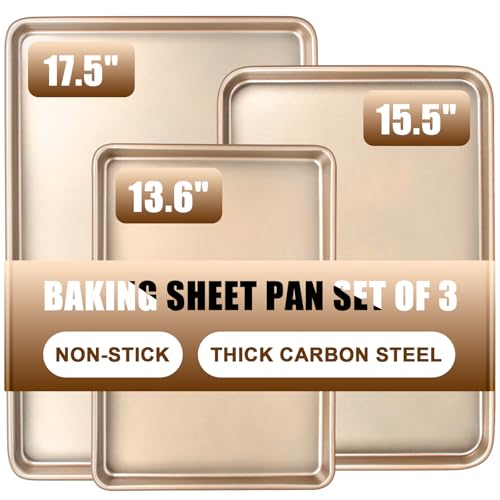We’ve all experienced that moment of craving the perfect roast beef sandwich – tender slices of juicy beef piled high between two pieces of fresh bread with just the right combination of toppings. This isn’t just any ordinary sandwich; it’s a culinary masterpiece that transforms simple ingredients into something extraordinary.
Our best roast beef sandwich recipe takes the classic deli favorite to new heights with perfectly seasoned beef that’s roasted to perfection and sliced paper-thin. We’ll show you how to create restaurant-quality sandwiches at home using techniques that lock in flavor and ensure every bite delivers maximum satisfaction.
Whether you’re planning a weekend lunch or preparing for a crowd, this recipe delivers consistent results that’ll have everyone asking for seconds. The secret lies in our special seasoning blend and the foolproof roasting method that guarantees tender, flavorful beef every single time.
Ingredients
We’ve carefully selected each ingredient to create the ultimate roast beef sandwich that delivers restaurant-quality results. Our ingredient list focuses on quality cuts of beef and complementary flavors that enhance the overall taste experience.
For the Roast Beef
- 3-4 pounds eye of round roast or bottom round roast
- 2 tablespoons kosher salt
- 1 tablespoon black pepper, freshly ground
- 2 teaspoons garlic powder
- 2 teaspoons onion powder
- 1 teaspoon dried thyme
- 1 teaspoon dried rosemary, crushed
- 1 teaspoon paprika
- 2 tablespoons olive oil
- 1 cup beef broth
For the Sandwich Assembly
- 8-10 fresh kaiser rolls or crusty sandwich rolls
- 8 ounces sharp cheddar cheese, sliced
- 1 large red onion, thinly sliced
- 2 cups fresh arugula or lettuce leaves
- 4 tablespoons butter, softened
Optional Toppings and Condiments
- Horseradish sauce (2 tablespoons prepared horseradish mixed with 1/4 cup mayonnaise)
- Dijon mustard
- Au jus (reserved beef drippings)
- Pickled jalapeños
- Roasted red peppers
- Caramelized onions
- Swiss cheese as alternative
- Tomato slices
- Avocado slices
Equipment Needed

Creating our exceptional roast beef sandwich requires exact tools that ensure professional results every time. We recommend gathering these essential pieces of equipment before starting your sandwich assembly process.
Sharp Knife or Meat Slicer
Our most critical tool remains a sharp knife, mandolin, or meat slicer for achieving those perfectly thin roast beef slices. Thin slicing ensures the sandwich stays manageable and delivers tender, easy-to-eat layers that won’t overwhelm your bite.
Toaster or Skillet
We need either a toaster or skillet to properly toast our kaiser rolls or sandwich bread. This equipment creates the ideal crispy exterior while maintaining a soft interior that holds our sandwich components together effectively.
Cutting Board
A sturdy cutting board provides our essential workspace for safely slicing vegetables and preparing ingredients. We prefer using a large board that accommodates all our sandwich components without crowding.
Spreader for Sauces
Our sauce application requires a proper spreader or knife to evenly distribute mayonnaise, horseradish sauce, or other condiments across the bread surface. Even distribution prevents soggy spots and ensures consistent flavor in every bite.
Optional Sandwich Accessories
Sandwich sticks help hold our creation together, particularly useful when serving guests or packing sandwiches for later consumption. These small tools prevent our carefully layered ingredients from shifting during handling.
Each piece of equipment serves a exact purpose in achieving restaurant-quality results at home. Proper tools make the difference between a good sandwich and an exceptional one that rivals your favorite deli.
Instructions

Let’s transform our quality cut of beef into the perfect roast beef sandwich masterpiece. We’ll guide you through each critical step to achieve tender, flavorful results every time.
Preparing the Roast Beef
We start by selecting our top round or sirloin roast and patting it completely dry with paper towels. Remove any excess fat or silver skin from the surface using a sharp knife. Allow the roast to come to room temperature for 30-45 minutes before seasoning, which ensures even cooking throughout the meat.
Seasoning and Searing
We generously salt our roast with kosher salt on all surfaces, then place it uncovered in the refrigerator for several hours or overnight. This technique enhances flavor, tenderizes the meat, and creates a dry surface for superior browning. After roasting, we heat a cast iron skillet over high heat and briefly sear all surfaces of the cooked roast for 1-2 minutes per side. This develops a rich mahogany crust without overcooking the perfectly tender interior.
Roasting the Beef
We preheat our oven to 250°F (120°C) for slow, even cooking that preserves maximum juiciness. Place the seasoned roast on a wire rack set over a rimmed baking sheet. Insert a meat thermometer into the thickest part of the roast and cook until the internal temperature reaches 125°F for medium-rare doneness. This low-temperature method cooks the beef evenly from edge to edge, preventing the outer portions from drying out while the center reaches perfect doneness.
| Temperature Guide | Internal Temp | Result |
|---|---|---|
| Medium-rare | 125°F | Pink center, optimal for sandwiches |
| Medium | 135°F | Slightly pink throughout |
| Medium-well | 145°F | Light pink center |
Resting and Slicing
We remove the roast from the oven and tent it loosely with foil, allowing it to rest for 10-15 minutes minimum. This crucial step redistributes the juices throughout the meat, ensuring maximum tenderness and moisture retention. For easiest slicing, we chill the roast completely in the refrigerator for at least 2 hours. Using our sharpest knife or meat slicer, we slice the beef as thinly as possible against the grain. Paper-thin slices create the ideal texture and mouthfeel that makes our roast beef sandwich truly exceptional.
Directions for Assembly

Now that our roast beef has rested and cooled properly, we can begin creating our masterpiece sandwich. The assembly process requires careful attention to layering and technique to achieve that perfect balance of flavors and textures.
Preparing the Bread
We start by selecting fresh kaiser buns or our preferred sandwich rolls and slicing them if they aren’t pre-cut. Lightly butter the cut sides of each bun to create a protective barrier and enhance flavor.
Toast the buns in a heated skillet until they turn golden brown and develop a firm texture. This crucial step creates a sturdy foundation that effectively resists sogginess from our sandwich fillings. The gentle toasting process warms the buns slightly and helps any cheese we add melt properly, acting as a natural “glue” to hold our sandwich ingredients together.
For those preferring a crunchier texture, we can alternatively toast our bread slices in a standard toaster until they reach our desired level of crispness.
Building the Perfect Sandwich
We begin our layering process by placing fresh arugula or lettuce leaves directly on the bottom bun. This protective green layer prevents our bread from becoming soggy when we add sauces and other moist ingredients.
Next, we spread our chosen sauce—whether it’s creamy horseradish or mayonnaise—over the lettuce layer. Some prefer adding relish or hot sauce for an extra kick of flavor.
We then place a slice of aged cheddar or pepper jack cheese directly on top of the lettuce. The cheese provides both structural support and rich flavor that complements our roast beef perfectly.
Our thinly sliced roast beef comes next, layered evenly across the cheese. We achieve the best results by chilling our roast before slicing it with a sharp knife or meat slicer, ensuring each piece is thin enough to bite through easily.
We complete our flavor profile by adding microgreens, thinly sliced radishes, red onions, and fresh tomato slices. These ingredients provide essential texture contrast and brightness that balances the rich beef flavors.
Final Assembly Tips
We place the top bun gently over our carefully constructed layers, avoiding any pressing that might crush our fresh ingredients. Securing our sandwich with toothpicks or sandwich sticks helps hold everything together during handling and makes cutting much easier.
We slice our completed sandwich into manageable halves or triangles, which improves both presentation and eating experience. Clean diagonal cuts work best for showcasing our beautiful layers.
For optimal texture and temperature, we serve our sandwich immediately after assembly. But, we can wrap and refrigerate assembled sandwiches for later consumption if needed, though the bread may lose some of its toasted crispness over time.
Make-Ahead Instructions

We’ve perfected these make-ahead techniques to ensure your roast beef sandwiches maintain their quality and flavor when prepared in advance. These methods save valuable time during busy weekdays while delivering the same delicious results you expect from freshly assembled sandwiches.
Preparing the Complete Sandwich
Our recommended approach involves assembling the entire sandwich 1 to 2 hours before serving. We start by spreading our creamy sauce mixture of sour cream, mayonnaise, and Dijon mustard on both halves of the bread. This protective barrier prevents moisture from seeping into the bread while adding flavor to every bite.
Layer the roasted red peppers first on the bottom half, followed by the thinly sliced roast beef and torn romaine lettuce. We place the lettuce last to create an additional moisture barrier between the beef and the top bun. Cover with the top half and wrap the entire sandwich tightly in plastic wrap.
Refrigeration and Storage
Store your wrapped sandwich in the refrigerator for optimal freshness. We find that 1 to 2 hours of chilling allows the flavors to meld beautifully while maintaining the bread’s texture. The sandwich holds well for up to 24 hours when properly wrapped, making it perfect for lunch prep or dinner planning.
Preventing Soggy Bread
Toast your bread lightly before assembly to create a moisture-resistant foundation. We recommend this step especially when preparing sandwiches more than 2 hours in advance. Layer cheese directly under the beef rather than against the bread to provide additional protection from moisture.
Serving After Storage
Remove the sandwich from refrigeration 10 minutes before serving to allow it to come closer to room temperature. Cut into 8 pieces using a sharp knife for clean, even portions. We suggest cutting just before serving to maintain the sandwich’s structural integrity and prevent the filling from shifting during storage.
Storage and Reheating Tips

Proper storage techniques ensure our roast beef sandwiches maintain their quality and flavor when prepared ahead. We recommend storing all ingredients separately if making these sandwiches in advance rather than assembling them completely.
Storing Components Separately
Individual ingredient storage preserves freshness and prevents sogginess. We wrap bread separately in plastic wrap and store it in the refrigerator for up to one week. The roast beef should be tightly wrapped in plastic wrap or stored in airtight containers to maintain moisture and prevent oxidation.
Fresh vegetables like lettuce and tomatoes require separate storage to maintain their crispness. We keep these ingredients in the refrigerator wrapped individually in plastic wrap. Sauces and condiments should be stored in their original containers or transferred to airtight containers for optimal freshness.
| Storage Method | Duration | Temperature |
|---|---|---|
| Bread (wrapped) | Up to 1 week | Refrigerated |
| Roast beef (wrapped) | Up to 1 week | Refrigerated |
| Fresh vegetables | Up to 1 week | Refrigerated |
| Sauces/condiments | Varies by type | Refrigerated |
What Not to Freeze
Freezing damages the texture and quality of sandwich components. Bread becomes soggy when thawed and loses its structural integrity. Fresh vegetables like lettuce and tomatoes develop ice crystals that break down their cellular structure. We avoid freezing assembled sandwiches entirely as they do not maintain their quality upon thawing.
Reheating Guidelines
Gentle reheating preserves the tender texture of our roast beef without overcooking. We warm only the meat portion using a microwave on low power settings or a skillet over low heat. The meat should be covered during reheating to retain moisture and prevent drying out.
Never reheat fully assembled sandwiches as this creates soggy bread and wilted vegetables. We reassemble the sandwich after warming the roast beef to maintain the fresh texture of all components.
Restoring Bread Freshness
Toasting or warming bread separately restores its original crispness. We use a toaster or dry skillet to lightly warm the bread before reassembling the sandwich. This technique recreates the fresh texture and prevents the bread from becoming chewy or stale tasting.
These storage and reheating methods allow us to enjoy restaurant quality roast beef sandwiches even when prepared in advance with minimal loss of flavor or texture.
Serving Suggestions

We recommend pairing our roast beef sandwich with complementary sides that enhance the overall dining experience. Hawaiian macaroni salad creates a delightful contrast with its creamy texture and subtle sweetness balancing the savory beef flavors. Homemade potato chips with gorgonzola dip add satisfying crunch while the tangy blue cheese complements the rich sandwich perfectly.
Crispy cauliflower tots offer a lighter alternative that still provides the satisfying crunch our palate craves. We love how their golden exterior and tender interior create textural variety alongside the tender roast beef. Baked asparagus fries bring fresh vegetable notes to the plate while maintaining that crispy element everyone enjoys.
Root vegetable chips provide an elegant touch with their natural sweetness and earth tones. These colorful chips made from beets, sweet potatoes, and parsnips create visual appeal while offering complex flavors that pair beautifully with our seasoned roast beef.
For those seeking comfort food combinations, we suggest serving the sandwich with creamy tomato bisque soup. The warm, velvety soup creates a perfect temperature contrast while its acidity cuts through the richness of the cheese and beef. This classic pairing transforms a simple lunch into a satisfying meal that warms both body and soul.
Consider temperature when planning your serving strategy. We find that allowing the sandwich to reach room temperature for about 10 minutes after refrigeration enhances all the flavors. The cheese softens slightly, the beef becomes more tender, and the bread achieves the perfect texture for eating.
Wine enthusiasts can elevate their roast beef sandwich experience by pairing it with a medium-bodied red wine or a crisp white wine. The tannins in red wine complement the beef’s richness, while white wine’s acidity brightens the overall flavor profile.
Recipe Variations

Our roast beef sandwich recipe transforms beautifully into three distinct styles that showcase different flavor profiles and serving preferences. Each variation builds upon our core technique while introducing unique elements that create memorable dining experiences.
Classic Deli Style
We prepare this traditional version using crusty rye bread or a hearty baguette as our foundation. Layer thinly sliced roast beef generously between the bread slices with Swiss cheese for authentic deli flavor. Spread creamy horseradish or mayonnaise evenly across one side of the bread to add moisture and tang. Fresh lettuce leaves and sliced tomatoes provide crisp texture while red onions contribute a sharp bite that balances the rich beef. Serve this sandwich cold or at room temperature to maintain the classic deli experience that customers expect from premium establishments.
French Dip Version
We elevate our roast beef sandwich by serving it on a toasted French roll or baguette section. Melt Provolone or Swiss cheese directly onto the warm beef for optimal texture and flavor integration. Prepare au jus by warming beef broth seasoned with garlic and herbs in a small serving bowl alongside the sandwich. Toast the bread lightly to create structure that holds up during dipping without becoming soggy. Pickled cucumbers or onions complement the rich beef flavors while cutting through the intensity of the warm sandwich and savory broth combination.
Hot Roast Beef Sandwich
We create this warm variation using sturdy Kaiser or sesame buns that withstand heat and moisture. Layer the roast beef with aged cheddar, horseradish cream cheese, or Provolone inside the bun before grilling. Butter the exterior surfaces of the bun and press the sandwich using a panini press or heavy skillet until golden brown and crispy. Sautéed onions, fresh radishes, or roasted red peppers add texture and flavor complexity to each bite. Serve immediately while the cheese remains melted and the bread maintains its crunchy exterior for maximum satisfaction.
Conclusion
We’ve walked you through everything needed to create the ultimate roast beef sandwich at home. From selecting the perfect cut of meat to mastering the art of assembly these techniques will transform your kitchen into a sandwich shop.
The key lies in the details – proper seasoning slow roasting and thin slicing against the grain. When combined with fresh ingredients and quality bread you’ll achieve that restaurant-quality taste we all crave.
Whether you choose the classic deli style French dip version or hot grilled variation each bite delivers maximum flavor and satisfaction. Your guests will be impressed and you’ll have a go-to recipe that never disappoints.
Start with quality ingredients follow our proven techniques and enjoy the perfect roast beef sandwich every time.
Frequently Asked Questions
What cuts of beef work best for homemade roast beef sandwiches?
Eye of round, bottom round, top round, or sirloin roast are ideal cuts for roast beef sandwiches. These cuts become tender when slow-cooked at low temperatures and slice beautifully when properly rested. Choose cuts with minimal marbling for the cleanest slicing results and best sandwich texture.
How thin should I slice the roast beef for sandwiches?
Slice roast beef as thinly as possible, ideally 1/8 inch thick or less. Use a sharp carving knife or meat slicer for best results. Always slice against the grain to ensure tenderness. Thin slicing prevents the sandwich from becoming chewy and allows for better layering.
Can I make roast beef sandwiches ahead of time?
Yes, assemble sandwiches 1-2 hours before serving for best results. Create a moisture barrier with creamy sauces, wrap tightly, and refrigerate. Store components separately for longer advance preparation. Avoid freezing assembled sandwiches as it damages texture and bread quality.
What’s the best way to prevent soggy sandwich bread?
Toast the bread lightly before assembly and use arugula or lettuce as a moisture barrier between wet ingredients and bread. Apply creamy sauces strategically and avoid overly juicy vegetables. Proper layering technique and quality bread selection also help maintain structure.
How do I properly reheat leftover roast beef sandwiches?
Disassemble the sandwich and warm only the meat gently in a low oven or microwave. Toast the bread separately to restore crispness, then reassemble with fresh vegetables and sauces. Never reheat the entire assembled sandwich as it will make the bread soggy.
What sides pair well with roast beef sandwiches?
Hawaiian macaroni salad, homemade potato chips with gorgonzola dip, crispy cauliflower tots, and baked asparagus fries complement roast beef sandwiches perfectly. Creamy tomato bisque soup also makes an excellent pairing for a complete, satisfying meal experience.
How long can I store roast beef sandwich components?
Store sliced roast beef for 3-4 days refrigerated, bread for 2-3 days wrapped, and fresh vegetables for 2-5 days depending on type. Keep components separate until assembly. Prepared sauces last 3-5 days refrigerated in covered containers.
What’s the difference between French Dip and regular roast beef sandwiches?
French Dip sandwiches feature melted cheese and are served with au jus (beef drippings) for dipping. Regular roast beef sandwiches are typically served cold or at room temperature with various vegetables and condiments but without the warm broth component.


























